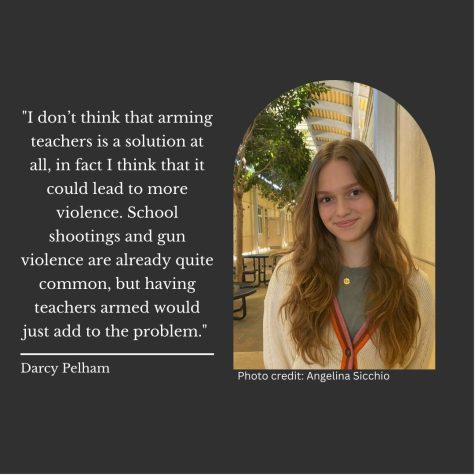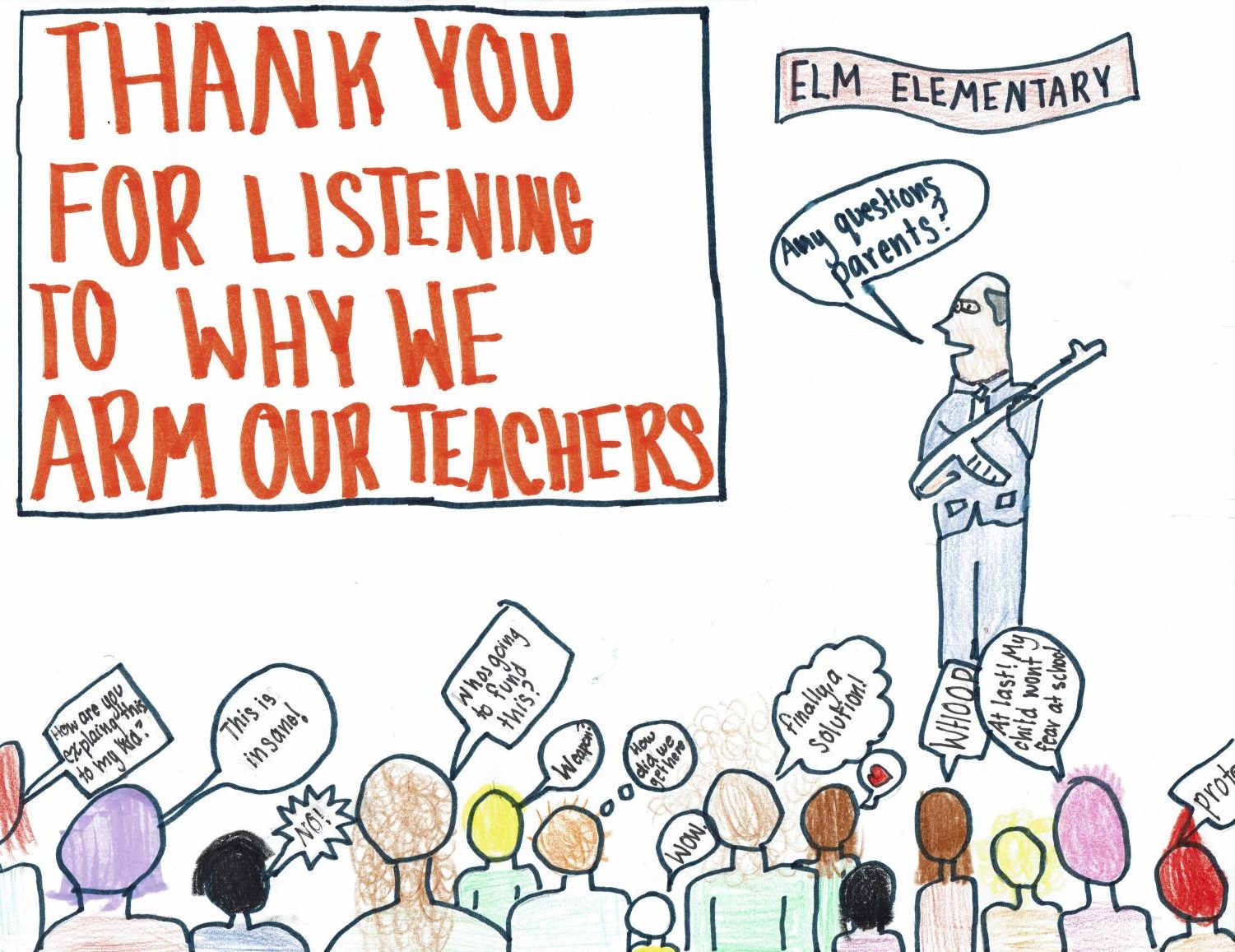Students across America have been forced to come to terms with what they would do if an active shooter were on campus. During the yearly active shooter drills, students are reminded of the dangers of getting an education in America.
According to EveryTown for Gun Safety, gun violence in schools in on the rise. EveryTown was founded in 2013 by Mike Bloomberg, former New York City mayor, and is a gun prevention organization. His organization found that gun violence in schools has nearly quadrupled between the academic years 2013 to 2022.
The increase in violence has resulted in 994 students being injured and 236 of those students dying over that same period, according to the Center for Homeland Defense and Security (CHDS) School Shooting Safety Compendium.
Society is clambering to come up with solutions– one of which is arming staff. 
One advocate of this position is former President Donald Trump. In February 2018, during a meeting at the White House addressing school safety, Trump supported the idea of arming staff.
“If you had a teacher adept with the firearm, they could end the attack very quickly,” Trump said.
Another supporter of this idea is Bill Husfelt, superintendent of the Bay school district in northwest Florida, who allows staff to carry firearms during school hours. Husfelt shared this video to understand his point of view regarding guns in educational facilities.
Husfelt acknowledges the concern that teachers may not know how to use a weapon properly. His district addresses this by putting staff through firearm training by the sheriff’s department before employees can be given a gun from the department. So, he feels confident in the preparedness of his teachers.
While Husfelt could not disclose the exact number, he said dozens of his staff members choose to be armed during the school day.
Another significant concern about arming staff is the racial, sexual, or gender bias the gun holder may have.
“They have to learn to not identify anyone just because of their race or gender or anything else,” Husfelt said.
While 28 states allow teachers to be armed in specific cases, according to the Rand Corporation, a nonprofit that conducts research to aid in decision-making, implementing a similar program in California is complicated.
Not only do the diverse opinions about guns in schools make it difficult to move forward with arming staff, but California laws also prohibit guns on school campuses.
In October 2017, California passed Assembly Bill No. 424 that would, “delete the authority of a school district superintendent… to provide written permission for a person to possess a firearm within a school zone.”
This bill forbids people, even those with concealed carry permits, to bring guns into a school campus.
Along with Bill No. 424, arming teachers does not have the support of the California Teachers Association (CTA), a labor union and the most significant democratic association for educators in California. Their opposition adds another hurdle California may face.
“To prevent tragedies, we must implement strong school safety solutions, but arming teachers is not one of them. School shootings are chaotic, and in these moments of chaos, we cannot ask teachers to stop a shooter, potentially a former student,” EveryTown said on their website.
While CTA is concerned about armed educators, it is also important to note the effects armed staff could have on students.
“I would not be happy or feel safe at school if the staff were armed… so much could go wrong,” said Darcy Pelham, a sophomore at Carlmont High School.
Not only does Pelham agree with CTA that guns on campus are not the solution, but she brings up concerns many also have.
“What happens if a student gets their hands on a gun? It increases the likelihood of a confrontation at school becoming lethal,” Pelham said. “If a teacher incorrectly perceives a threat and uses their gun… this would allow teachers to use possessing a gun as power over the students.”
Many Carlmont staff agrees with 57% of Americans that believe guns have no place in education facilities.
“It is like when you get your driver’s license; everybody is the perfect driver during the driving test. However, once you get your driver’s license, you can have road rage against certain people, certain ethnicities, and certain genders,” said Katherine Ortiz, the AP coordinator and attendance clerk at Carlmont.
Ortiz compares behavior before and after your driving test to the behavior she can expect with staff and guns. She feels teachers could easily act perfectly in gun training. However, there may still be some bias in the moment.
Although she feels Carlmont needs more security, she would instead try other techniques to combat school shootings.
“Instead of going straight to guns, what else can we do? Let us try other stuff… tasers…K-9s, or locking doors,” Ortiz said.
Despite the controversy, one thing remains consistent in the minds of Americans.
“We can all agree gun violence is a huge issue,” said Alexandra Medvedeva-Pacheco, a sophomore at Carlmont High School. “No matter our political beliefs, we all must work together to find a solution.”



